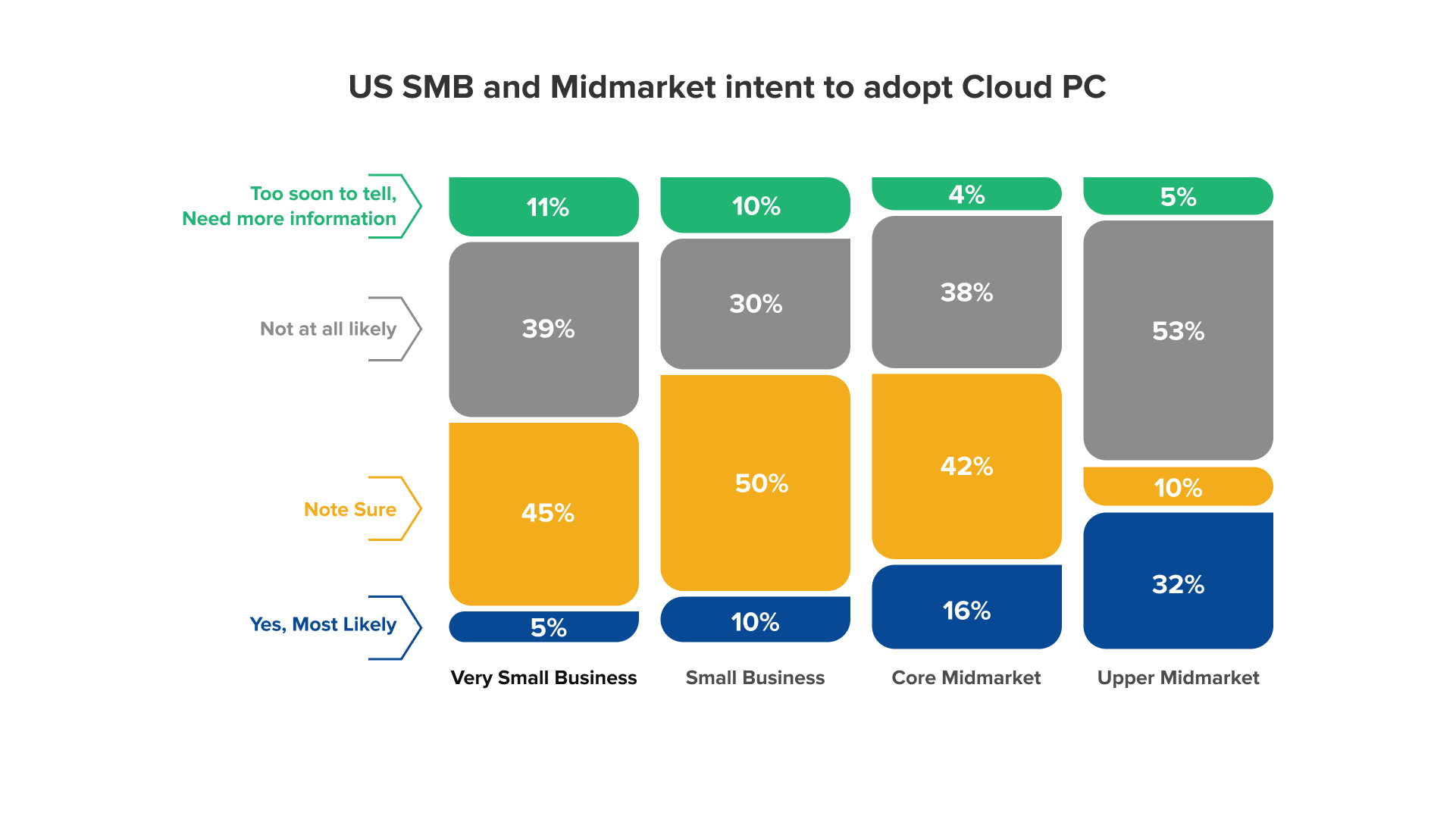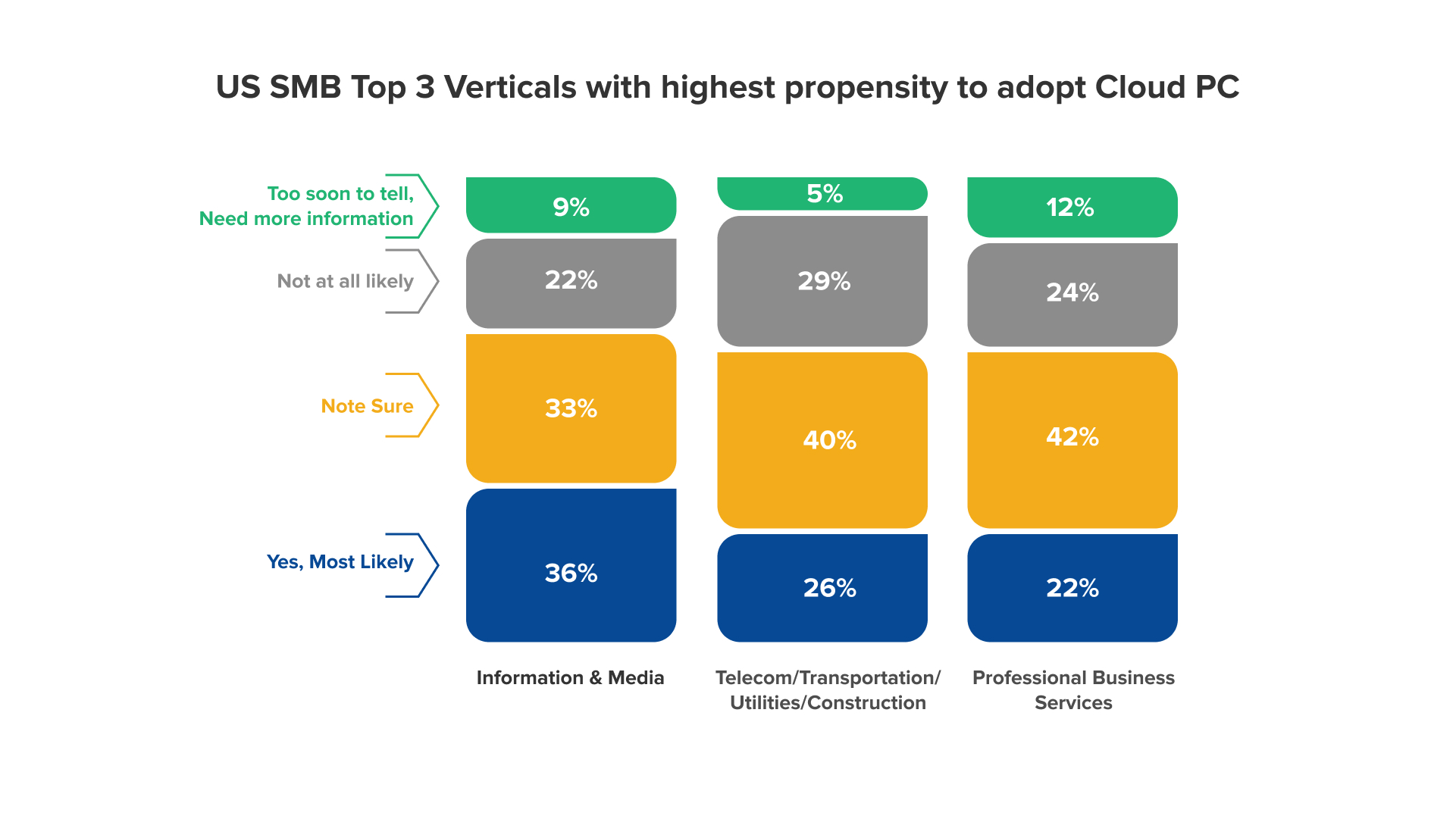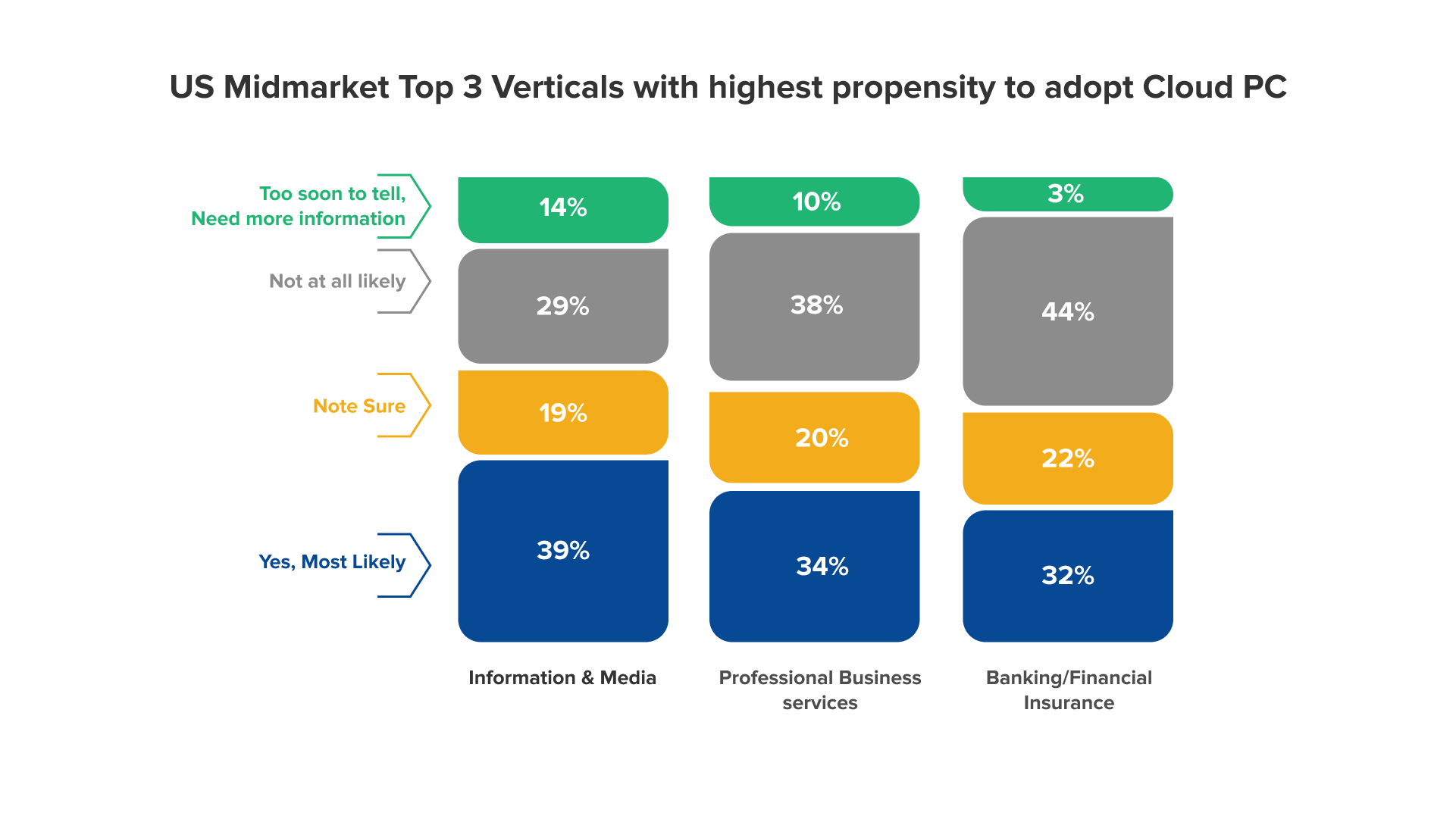Straight after Windows 11, Microsoft announced a new service that allows business users to access cloud PC from anywhere. Microsoft Cloud PC, Windows 365 will be available from August 2, 2021, for businesses of all sizes. Any modern browser can be the desktop environment, and any device can be the workspace. As per Microsoft - Windows 365 is a cloud service that introduces a new way to experience Windows 10 or Windows 11 (when it’s generally available later this calendar year) for workers from interns and contractors to software developers and industrial designers. Windows 365 takes the operating system to the Microsoft Cloud, securely streaming the full Windows experience—including all apps, data, and settings—to personal or corporate devices. This approach creates an entirely new personal computing category, specifically for the hybrid world: the Cloud PC.
Techaisle data suggests that SMB and midmarket buyers will appreciate its portability, native access to web-based resources, its innovative approach to security, access to Microsoft Office personal productivity solutions, namely M365, and the ability to add to Azure Active Directory. Data from a survey conducted by Techaisle in the US shows that 5% of very small businesses, 10% of small businesses, 16% of core midmarket firms, and 32% of upper midmarket organizations may adopt Cloud PC. These are fascinating data points, which may well change with additional information and user experiences. Information/Media and Professional business services verticals have shown a higher intent for adoption than other verticals.



We know that windows and walls and common-area couches don’t define today’s workspace. For millions of SMB employees, the “workspace” isn’t a physical location – it’s a virtual space defined by access from multiple screens from multiple locations. This has been especially true of mobile workers, a category which today is increasingly indistinguishable from “hybrid workers.” In the “jobless recovery” following the Great Recession of 2007-2009, many professionals found that in the absence of secure, high-paying jobs, they needed to function as “solopreneurs,” selling expertise to a group of clients on a fee-for-service basis, and working from home and multiple client locations. At the same time, the increased capability of mobile technology – laptops, smartphones, and tablets – made it possible for client-facing employees, such as salesmen, adjustors, and field support workers, to move their “workspaces” to wherever the job took them.
Today, mobility, remote/virtual, face-to-face/physical have merged to form a Ubi-hybrid future. Work may not return to pre-pandemic patterns. Even workers who newly return to ‘in the office’ environments will want to capitalize on the advantages they realized - flexibility, tools that increase productivity - during the pandemic. Equally significantly, the way workers engage with external contacts - customers and prospects, suppliers, professional peers/collaborators - is permanently changed. Future meetings may well have a face-to-face component, but F2F won’t limit them. Hybrid will be ubiquitous, with ‘working groups’ needing to connect internal and virtual resources.
This Ubi-Hybrid future will require SMB employers to equip workers with flexible, powerful individual secure workspaces that can connect seamlessly with colleagues in a boardroom and with remote, virtual customers or collaborators. A combination of Windows 365 and Microsoft 365 may well equip SMB employees with that flexible workspace. In emerging market countries, a gating factor may be the minimum broadband speed requirement of 27 Mbps. However, as per Speedtest Global Index, more than a hundred countries (in the fixed broadband category) are above the threshold, but the ground reality in some countries is different.
The impact of Windows 365 on the SMB PC market is too soon to tell. Many SMBs and midmarket firms may delay purchases of additional PCs. Instead, they may repurpose the older PCs (current inventory) with Windows 365. Or they may even decide to purchase lower-priced desktops (than notebooks), one for the home and a second for the office. Because of more than one choice, decision inertia may slow down the PC market. SMBs now have many options, including PCaaS. SMBs will choose to conduct an economic benefit analysis, including configuration licensing of Windows 365 plus Microsoft 365 versus capital purchase of new PCs or PCaaS adoption with included M365.
Digital transformation is vital for SMB business success. Data from Techaisle SMB and Midmarket digital transformation research shows that 68% are actively investing in digital transformation technologies, 55% have accelerated their investments in digital technologies. Digital transformation also includes the configuration of workspaces around individuals, enabling Ubi-hybrid collaboration. It isn’t a business investment goal, but SMBs align technology investments with enhanced competitiveness, growth, and profitability. At the same, remote IT support, the top challenge to support hybrid workers is escalating. Microsoft Cloud PC, very different from Azure Virtual Desktop (AVD), may well be a welcome respite and help alleviate many SMB pain points, reduces complexity, has ease of use and management. It can directly integrate with Endpoint Manager, has zero-trust security architecture and data encryption during transit. It also opens up newer opportunities for channel partners, including the ability to up-sell InTune and Autopilot for non-Cloud PCs. Windows 365, Microsoft Cloud PC, has been announced at the right time and is beneficial for SMBs and midmarket firms.